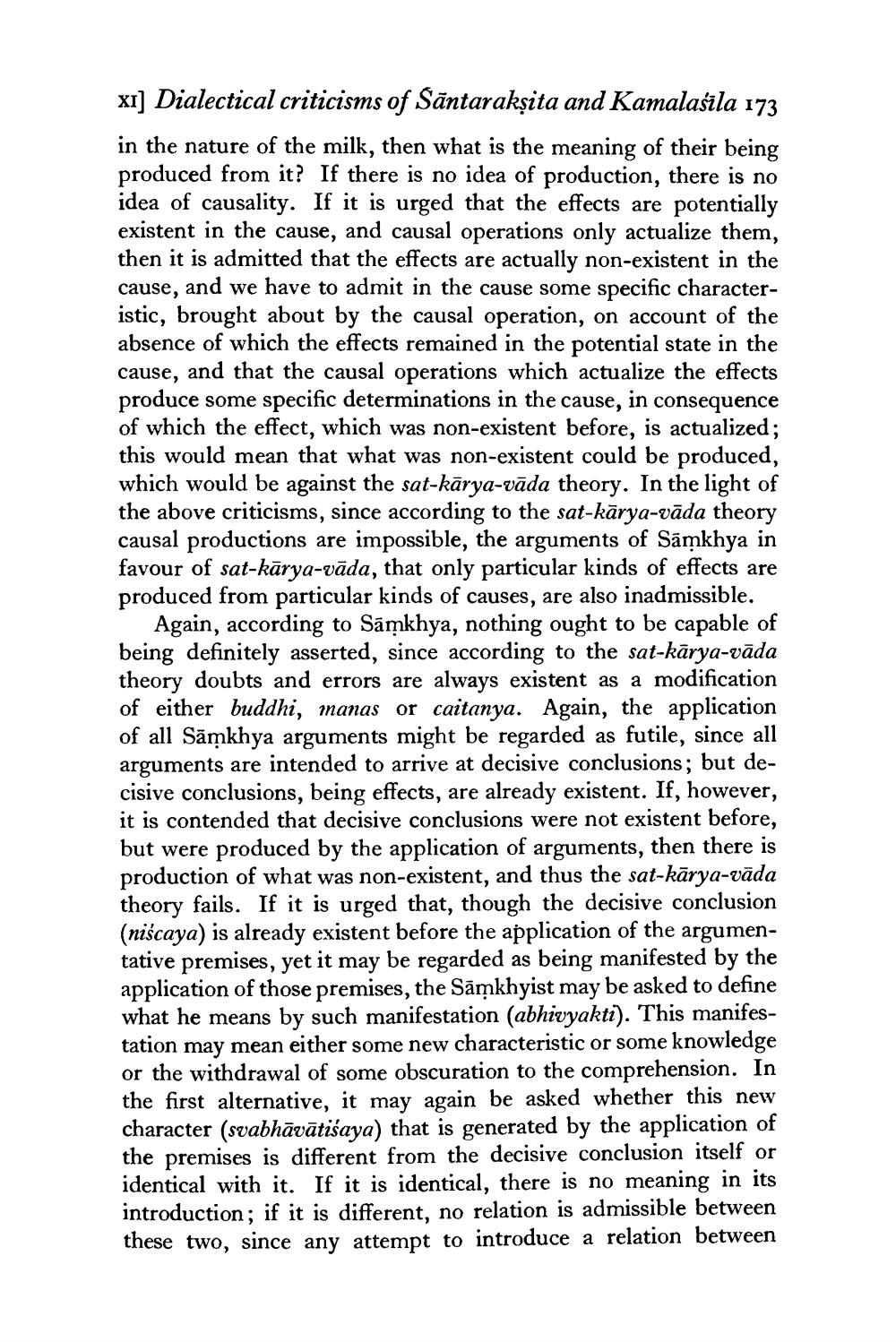________________
XI] Dialectical criticisms of Sāntarakṣita and Kamalašila 173 in the nature of the milk, then what is the meaning of their being produced from it? If there is no idea of production, there is no idea of causality. If it is urged that the effects are potentially existent in the cause, and causal operations only actualize them, then it is admitted that the effects are actually non-existent in the cause, and we have to admit in the cause some specific characteristic, brought about by the causal operation, on account of the absence of which the effects remained in the potential state in the cause, and that the causal operations which actualize the effects produce some specific determinations in the cause, in consequence of which the effect, which was non-existent before, is actualized; this would mean that what was non-existent could be produced, which would be against the sat-kārya-vāda theory. In the light of the above criticisms, since according to the sat-kārya-vāda theory causal productions are impossible, the arguments of Sámkhya in favour of sat-kārya-vāda, that only particular kinds of effects are produced from particular kinds of causes, are also inadmissible.
Again, according to Sāmkhya, nothing ought to be capable of being definitely asserted, since according to the sat-kārya-vāda theory doubts and errors are always existent as a modification of either buddhi, manas or caitanya. Again, the application of all Sāmkhya arguments might be regarded as futile, since all arguments are intended to arrive at decisive conclusions; but decisive conclusions, being effects, are already existent. If, however, it is contended that decisive conclusions were not existent before, but were produced by the application of arguments, then there is production of what was non-existent, and thus the sat-kārya-vāda theory fails. If it is urged that, though the decisive conclusion (niścaya) is already existent before the application of the argumentative premises, yet it may be regarded as being manifested by the application of those premises, the Sāmkhyist may be asked to define what he means by such manifestation (abhivyakti). This manifestation may mean either some new characteristic or some knowledge or the withdrawal of some obscuration to the comprehension. In the first alternative, it may again be asked whether this new character (svabhāvātiśaya) that is generated by the application of the premises is different from the decisive conclusion itself or identical with it. If it is identical, there is no meaning in its introduction; if it is different, no relation is admissible between these two, since any attempt to introduce a relation between




